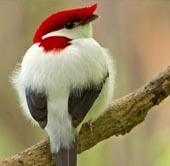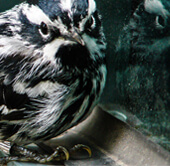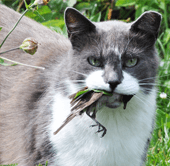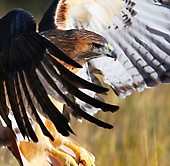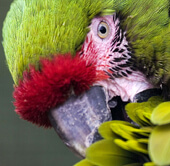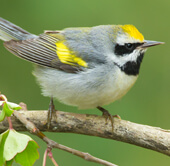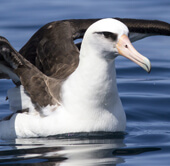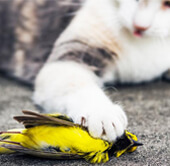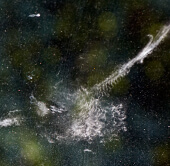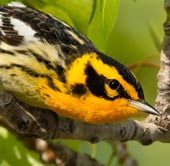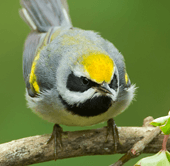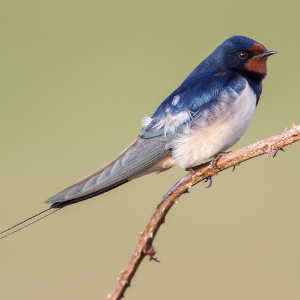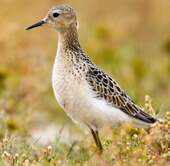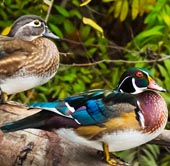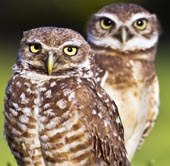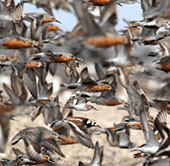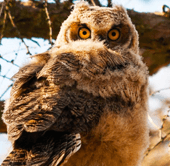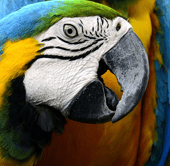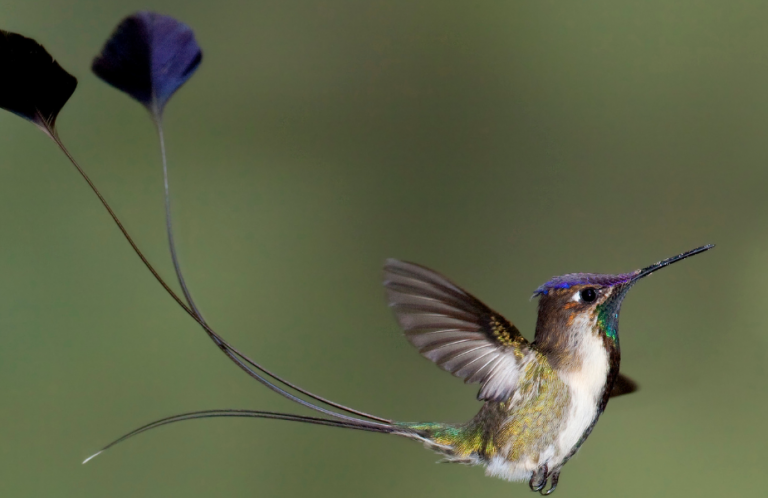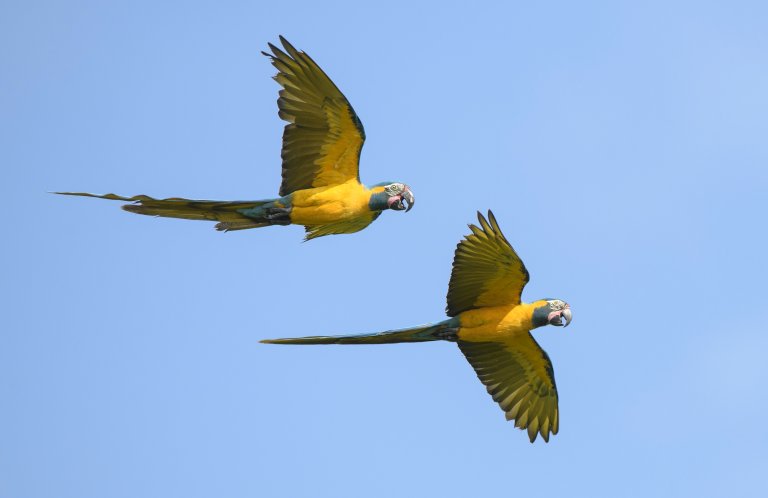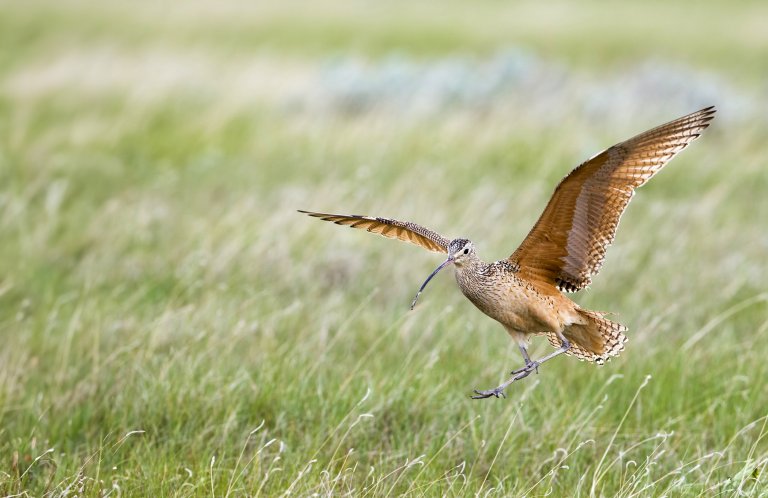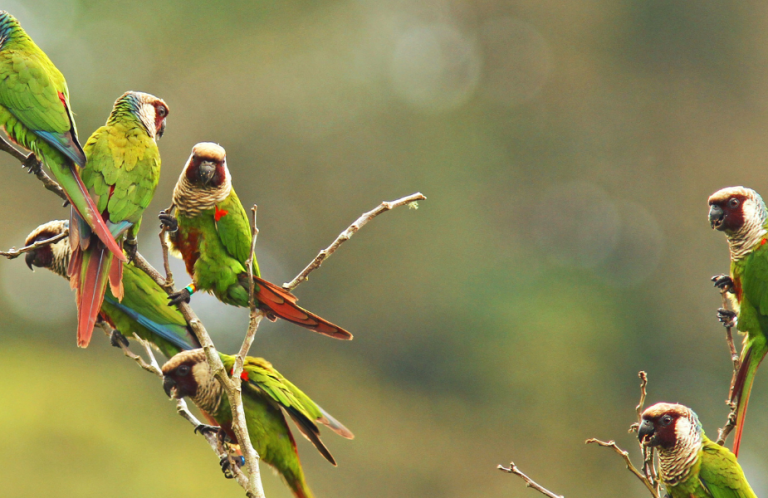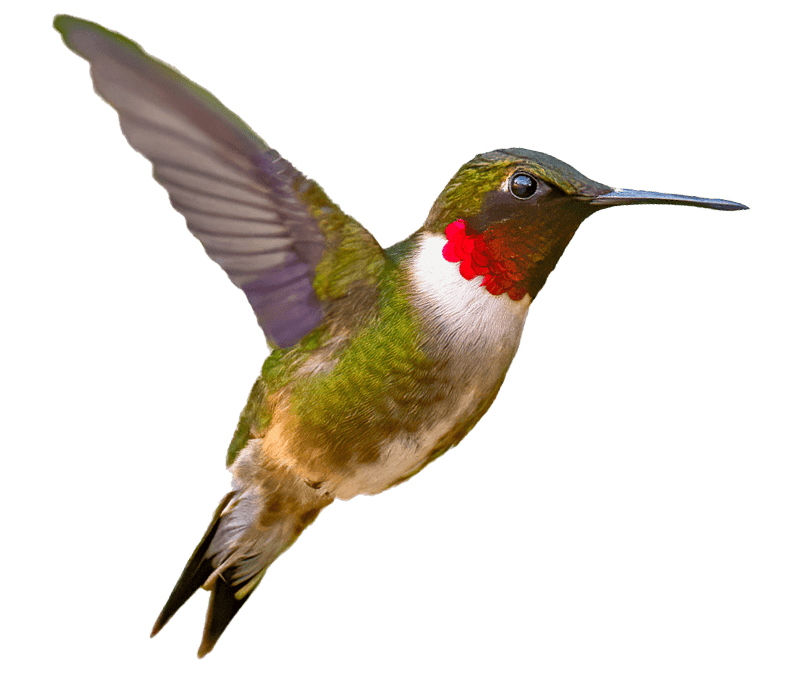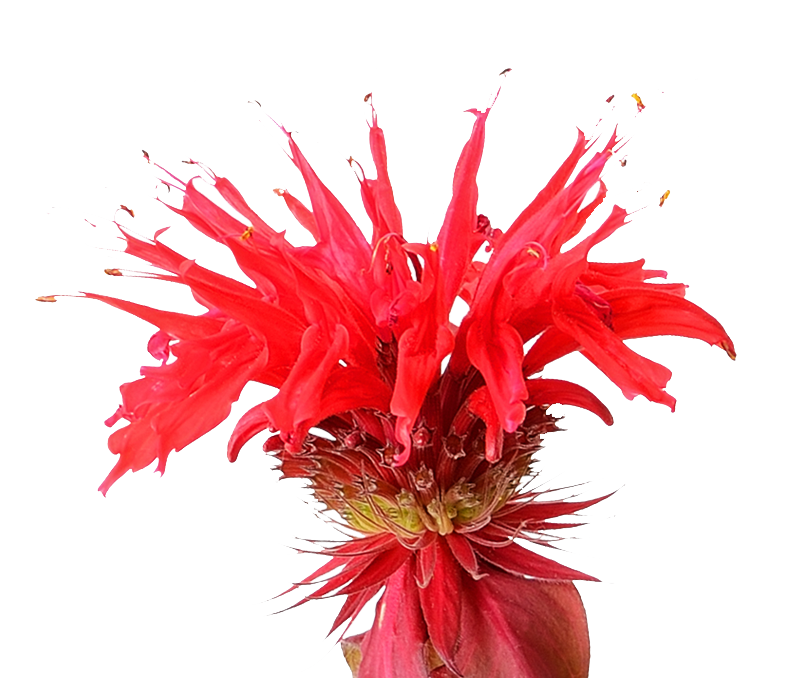Month by Month, Make the Year Ahead Count for Birds
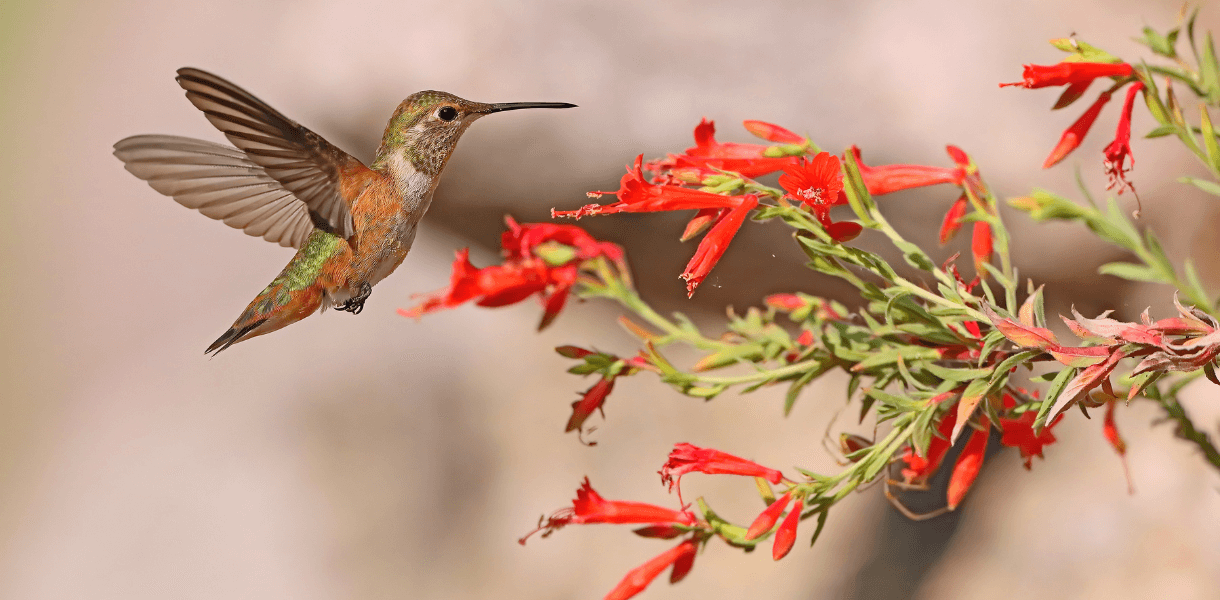
Happy New Year! Here at American Bird Conservancy (ABC), we're closing out a milestone 30th anniversary year and looking ahead to another year of taking bold action for birds across the Americas. You might say that's our resolution this year.
Maybe you're filled with a sense of optimism and enthusiastically filling the pages of a new planner. Perhaps you're resolution-averse and giving yourself the gift of a low-stakes start to the New Year. Or you might feel concerned about the long-term prospects for bird conservation and simply want to do what you can to help. However you feel about the new year, we've collected a list of actions that you can take each month to support birds. From low- to no-effort tasks (seriously — read up on fall gardening!), to ongoing projects, there's no shortage of things we can do year by year, month by month, and even day by day to help birds and their habitats.
January – Pledge to keep your cat indoors, or safely contained outdoors.
Every year in the United States, an estimated 2.4 billion birds lose their lives to cat attacks. Cats are non-native predators that people have placed on the landscape, and they take a heavy toll on native wildlife. Keeping cats indoors is one effective way to make the habitat around you safer for birds, and it's a resolution you can carry out all year.
It could also be a lifesaver for your beloved pet: Cats that live inside or have supervised and contained adventures outdoors live longer than those that are left to roam on their own.
Your cat companion can still have enriching experiences outdoors. Explore options for catios, screened-in structures where cats can independently explore outside without coming into contact with wildlife. Adventurous felines often take to leash and harness training, and backpacks and strollers keep kitty close while you both enjoy the outdoors.
Kick off the year with the Cats Indoors Pledge.
February – Commit to an even sweeter, bird-friendly Valentine's Day.
Love is in the air in February — and so is the smell of chocolate. What could possibly be sweeter? Chocolate that's as beneficial for birds as it is tasty for us. This year, set a goal for a bird-friendly Valentine's Day.
Typically, growing cacao (the bean that once processed becomes cocoa, the key ingredient in chocolate) means clearing large tracts of rainforest habitat where many migratory birds, like the Black-throated Blue Warbler and Bicknell's Thrush, spend their nonbreeding season. Using bird-friendly approaches, the small evergreen cacao trees grow in the shade alongside native trees, keeping the habitat that provides shelter and food for birds intact while supporting growers.
So, if you want to woo your Valentine or enjoy a little treat yourself, Smithsonian certified Bird Friendly™ cocoa products fit the bill! You can also warm up with Bird Friendly™ coffee until the warblers return in spring.
March – Resolve to make your windows safer for birds.
By March, you may be catching the spring cleaning bug. While you're tidying up inside, be aware of your windows. You might like them sparkling and crystal clear, but that could be a danger for the birds in your area. Birds can't see glass — they just see the vegetation from their habitat reflected in and viewed through windows. More than one billion birds die in window collisions each year, a staggering figure for a problem we can fix.
Fortunately, you can keep your windows shiny and clean while reducing the risk for birds. A number of solutions, from elegant etched glass to easy-to-apply decals, can help break up the reflections in your windows, making them visible to birds without compromising your view. Browse our Collisions Products and Solutions Database for dozens of options, all tested by ABC's Collisions team.
Want to break up this project across the year? Start with the riskiest windows, usually large picture windows, those with feeders close by, and those with greenery visible through the glass or in its reflection.
April – Plan to flip the switch on nighttime lighting.
With your windows now treated, it's time to make the next move to help migrating birds: turning off the lights. Lighting can be disorienting for birds, especially those that are migrating at night. It can draw them off their migratory paths and result in window collisions or encounters with predators. Some birds, distracted by bright lights, will circle them to the point of exhaustion, leaving them vulnerable.
Big cities get the most attention for their role in reducing light pollution, but flipping the switch for houses, apartments, and commercial buildings outside of bustling, bright city centers is just as important. ABC and our partner DarkSky International encourage turning off lights at night when they're not needed or closing blinds to keep light in. Consider your outdoor lighting: Use only essential lights, use motion-detecting sensors to turn light on only as needed, and swap bright LEDs for warmer-toned bulbs.
This is one resolution you can keep going all year (your wallet will thank you when your electricity bills are lower) or revive from mid-August through November, when migratory birds are once again on the move.
May – Resolve to keep pesticides off your lawn.
May marks the peak of spring migration in the Northern Hemisphere, with millions of warblers, orioles, vireos, and other birds on the move. Birds are busy singing sweetly and courting potential mates, building nests, and preparing to raise their young who, in just a few short weeks, will be begging for caterpillars, damselflies, beetles, and moths.
If you're lucky, you may get to experience this spectacle in your own backyard, bugs and all. Make sure fledglings have plenty to feast on. Avoid using harmful pesticides that can deplete the plants and insects birds depend on. Commit to researching chemical-free alternatives that handle pests without harming birds.
Bonus: It's also farmer's market season, so you can scout out organic produce raised without pesticides to further your impact.
June – Make helping fledglings (and their parents) a priority.
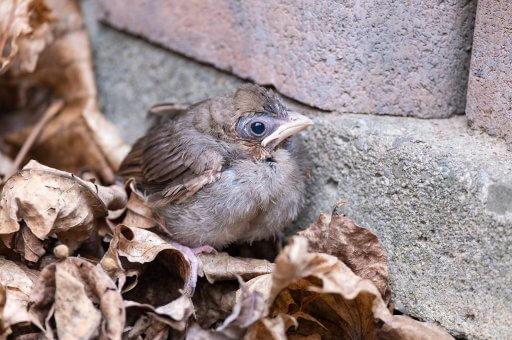
By the end of June, if they haven't fledged young already, birds are patiently on the nest waiting for hatchings to happen. Summer is the peak of fledgling season and one of the most vulnerable times in a young bird's life. When parents molt after their young fledge, they too are in a more precarious position.
Now's the time to double down on other resolutions, like keeping cats indoors and treating windows to prevent collisions. Watch where you're working in your yard and steer clear of spots where parents are nesting and young birds are fledging. Leave those areas alone for now (or forever, if you're truly committed!) to reduce stress and disturbance to the birds. Be sure to clean your feeders and baths regularly for good hygiene and to prevent disease transmission. Birds that are successful in raising their young are more likely to come back to the same area the following year to nest again.
Learn what to do if you find a young bird outside the nest. Most often, you'll simply leave the bird be, but some situations require intervention.
July – Promise to hang up your plastic habit.
Even if you live far from the beach, you can still make a difference for shorebirds, seabirds, and marine life. Much of the plastic trash that gets thrown away across the United States ends up in the ocean, creating islands of plastic and washing up on land. Along the Gulf Coast in Texas, plastic and other debris are carried by strong currents in the Atlantic Ocean. Once on the shore, this tangle of bottles, nets, straws, and other items becomes a major hazard for shorebirds.
Removing this tidal wave of trash is tricky, and while the ABC-supported Stopping Plastics and Litter Along Shorelines (SPLASh) program has cleared an astonishing 50,000-plus pounds of it from beaches and coastal habitats in Texas, it still keeps coming ashore. One of the most effective ways to prevent this deluge of debris is to stop it at its source: our own homes. And this month happens to be Plastic Free July — the perfect time to scale back and put plastic in its place.
August – Take the beach vacation you've been dreaming of, but make it bird friendly.
Ready for a vacation? You've been working hard for the birds this year — you've earned it! But if you're heading to the beach, know you'll have company: Thousands of shorebirds from Black Skimmers to Snowy Plovers are settling in for the breeding season, and they're counting on us to share the beach.
Shorebirds are sensitive to human disturbance. Be sure to give them space, watch where you step (their speckled eggs blend right in with the surrounding sand), keep pets leashed for your beach strolls, and avoid loud noises like fireworks.
Just as you would with any outdoor adventure, leave only footprints and take only photos. Trash and debris can cause huge problems for shorebirds and seabirds, entangling and ensnaring birds and even ending up in the beaks of their young.
September – Use your voice for birds and their habitats.
This month, make a plan to learn about policies that impact birds and their habitats. Birds need us. In the U.S., a number of landmark policies like the Migratory Bird Treaty Act and the Endangered Species Act have helped species from the Bald Eagle to the Kirtland's Warbler bounce back. Read up on these laws and find opportunities to take action and support ABC's policy aims to conserve birds and their habitats.
If you want to take your action even further, find out what the birds in your community need. Maybe you've observed a dearth of dead migratory birds on the sidewalks downtown in the shadow of reflective skyscrapers. Or, perhaps you've noticed a colony of unowned cats that would be safer (and no longer a threat to birds) in a shelter. Advocacy isn't a one-month activity: It's something you can take part in all year, and sometimes it means playing the long game.
October – Give yourself a break. Leave the leaves!
Here's an easy one! This month, kick back and relax and let nature do its thing.
As the warm weather fades in the Northern Hemisphere and leaves are falling, it's tempting to reach for the rake. Resist the urge and leave the leaves! Fallen leaves provide shelter for the winter for salamanders, small rodents, frogs, and invertebrates like moths that birds depend on for food come spring. Leaving the leaves alone will also return nutrients to the soil, creating perfect conditions for native plants to grow in the future.
Bonus: If you're celebrating “spooky season” with creepy outdoor decor, keep the birds in mind. Avoid sticky fake cobwebs, which can unintentionally ensnare birds and other wildlife. Scare up other bird-friendly tips for your Halloween hauntings.
November – Sow seeds for next year.

In the Northern Hemisphere, fall tends to be the optimal time for getting native plants started. This month, look ahead to next spring and plan your garden. You can start small with a single bed or make your yard a native plant meadow. Learn about the native plant species that do well in your area and explore the bounty of resources available for selecting the perfect plants for your climate.
If you lack a lawn or simply can't manage a full garden, never fear: Even a single native plant in a pot on your porch or apartment balcony can be a food source for birds or a nice place to nest. (Bonus: Find a pollinator garden nearby and set an intention to volunteer next year.)
December – Commit to joining and growing the bird conservation community.
Bird conservation works because of the people involved at every level, from backyard bird feeder aficionados to ecologists and biologists. Cap off a year of resolutions for the birds by connecting with the community of people who love them! Join birding outings near you, share your bird observations on eBird, introduce someone to the wonders of birds, or learn about the organizations striving to make our movement more inclusive, expansive, and effective for birds.
Just like every bird in its ecosystem, you'll find your niche in the bird conservation community. You can also become an ABC member to support our work and make an impact throughout the Western Hemisphere.

